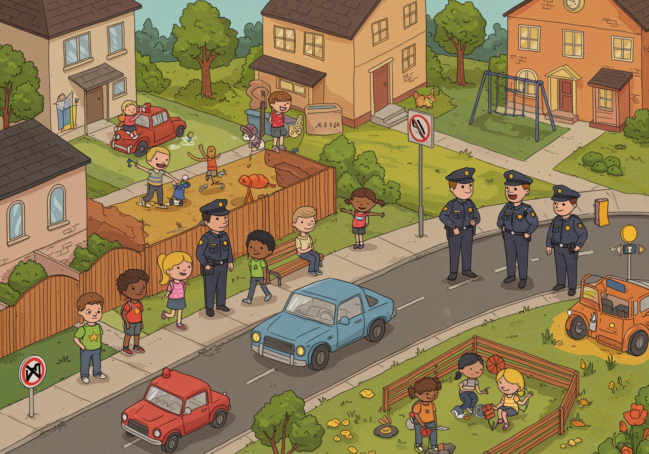Key Takeaways
- Children actively build knowledge through experiences and interactions with their environment
- Cognitive development progresses through four distinct stages from birth to adolescence
- Understanding these stages helps parents and teachers support learning in developmentally appropriate ways
- Effective strategies include hands-on activities, thoughtful challenges, and meaningful social interactions
- Recognizing cognitive capabilities at each stage prevents frustration and enhances learning outcomes
Who Was Jean Piaget?
Jean Piaget (1896-1980) was a Swiss psychologist whose observations of children revolutionized how we understand cognitive development. What makes his work so valuable for educators? Piaget discovered that children aren’t simply “mini-adults” with less knowledge. Instead, they think in fundamentally different ways as they grow.
Piaget’s theory explains how children’s thinking evolves through predictable stages. Understanding these stages provides practical insights into why children approach problems in certain ways and how to create age-appropriate learning experiences at home and school.
The Four Stages of Cognitive Development
Piaget identified four major stages of cognitive development.
Each stage represents a qualitative change in how children understand and interact with the world:
1. Sensorimotor Stage (Birth to 2 Years)
During this earliest stage, babies understand the world primarily through sensory experiences and physical actions. They gradually develop object permanence—the understanding that objects continue to exist even when out of sight.
Practical Applications: Provide rich sensory experiences and opportunities for physical exploration. Simple cause-and-effect toys, peek-a-boo games, and varied textures support cognitive development. Parents can narrate everyday activities to connect actions with language.
2. Preoperational Stage (2 to 7 Years)
Preschool and early elementary children develop symbolic thinking but struggle with logic and taking others’ perspectives. They exhibit egocentrism (seeing things only from their viewpoint) and magical thinking.
Practical Applications: Use stories, pretend play, and visual aids to leverage their growing symbolic abilities. Help children understand different viewpoints through questions like “How do you think your friend feels?” Be concrete with instructions and explanations, as abstract concepts remain challenging.
3. Concrete Operational Stage (7 to 11 Years)
Elementary-aged children develop logical thinking about concrete situations. They understand conservation (that quantity remains the same despite changes in appearance) and classification. Abstract thinking is still developing.
Practical Applications: Connect abstract ideas to tangible examples. When helping with math homework, use physical objects before moving to written equations. Encourage collections and sorting activities. Support problem-solving by helping children identify steps and organize information.
4. Formal Operational Stage (11+ Years)
Adolescents develop the ability to think abstractly, reason hypothetically, and systematically test ideas. They can consider multiple perspectives and possibilities.
Practical Applications: Engage teens in discussions about hypothetical situations and ethical dilemmas. Ask open-ended questions that encourage them to consider multiple possibilities. Support their growing independence while providing guidance for complex decision-making.
Key Concepts for Supporting Children’s Learning
Schema, Assimilation, and Accommodation
Piaget described how children organize knowledge into mental frameworks called schemas. When new information fits existing schemas, it’s assimilated. When information conflicts with existing schemas, accommodation occurs—the schemas themselves change.
For parents and teachers, this means:
- Connecting new learning to what children already know (assimilation)
- Recognizing when children need to revise their understanding (accommodation)
- Building on existing knowledge rather than treating each learning experience as isolated information
Equilibration: The Drive for Understanding
Children naturally seek cognitive balance (equilibrium) when faced with new information. This drive to make sense of experiences motivates learning.
- Introducing puzzling situations that spark curiosity
- Allowing time for exploration and discovery
- Understanding that some confusion is productive for learning
Practical Strategies Based on Piaget’s Theory
- Match activities to developmental stages Recognize what kinds of thinking your child is capable of and provide appropriately challenging experiences.
- Provide hands-on, concrete experiences Even for older children, building understanding through physical experiences before moving to abstract concepts improves comprehension.
- Encourage active learning Create environments where children discover concepts through exploration rather than passive reception of information.
- Support social interaction Conversations with peers and adults expose children to different perspectives, challenging their egocentrism and promoting cognitive growth.
- Ask open-ended questions “What do you think would happen if…?” questions promote hypothetical thinking and reasoning.
- Recognize individual differences While stages are sequential, children progress through them at different rates and may show characteristics of multiple stages.
Applying Piaget’s Theory at Home
Parents can incorporate Piaget’s insights into everyday activities:
- Mealtime conversations can introduce new vocabulary and concepts.
- Household tasks offer opportunities for sorting, measuring, and problem-solving.
- Games that require strategy develop logical thinking.
- Nature walks encourage observation and questioning.
- Reading together supports symbolic thinking and perspective-taking.
When children struggle with concepts, consider whether the challenge matches their developmental stage. Adjusting expectations based on cognitive development reduces frustration and builds confidence.
Limitations of Piaget’s Theory
While immensely valuable, Piaget’s theory has some limitations parents and teachers should know:
- Children may show more advanced thinking when tasks are familiar or personally meaningful
- Cultural differences affect cognitive development in ways Piaget didn’t fully address
- Language and social factors may play a larger role than Piaget emphasized
Related Topics to Explore
Vygotsky’s Social Development Theory: Complements Piaget by emphasizing the role of social interaction and culture in cognitive development.
Growth Mindset: Connects to Piaget’s ideas about how children respond to challenges.
Executive Function Skills: Explains how attention, memory, and self-regulation develop alongside cognitive abilities
Play-Based Learning: Shows how unstructured play supports cognitive development in ways Piaget would recognize
In Summary
Jean Piaget’s cognitive development theory provides crucial insights into how children think at different ages. By understanding these developmental stages, parents and teachers can create learning experiences that match children’s cognitive abilities—challenging them appropriately without causing frustration.
Effective support for children’s learning combines Piaget’s insights with attention to individual interests and needs. Remember that all children move through the same sequence of development but at individual paces, requiring personalized approaches to foster their natural curiosity and love of learning.
Keep Reading!
Learn more about Jean Piaget’s work.
Learn how how you can apply Piaget’s principles as a parent or teacher.

Looking for a fresh way to engage young learners?
Bring learning to life with story-based custom lesson plans you can build in minutes!



